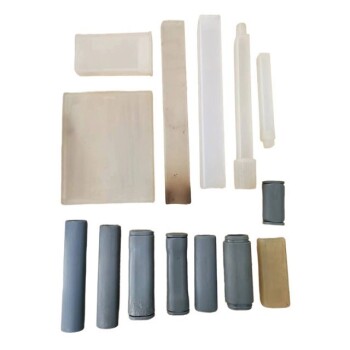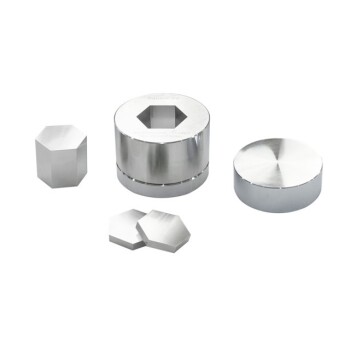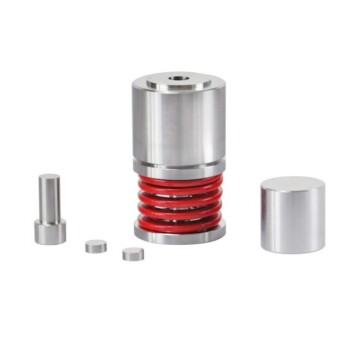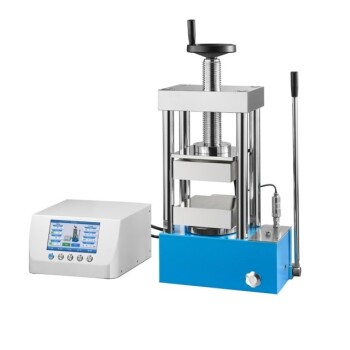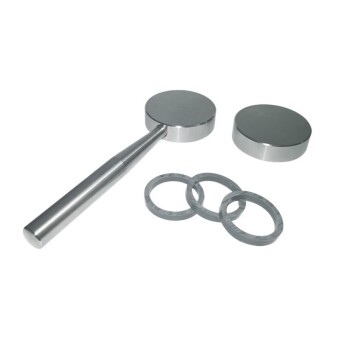In short, the typical working static pressure for a Warm Isostatic Press (WIP) operates in the range of 0 to 240 MPa. This level of pressure, when combined with elevated temperature, is highly effective for uniformly compacting powder materials into a dense, high-quality solid part.
The core principle to understand is that Warm Isostatic Pressing strategically uses moderate heat to soften the material, which significantly reduces the amount of pressure required for densification compared to cold processes.
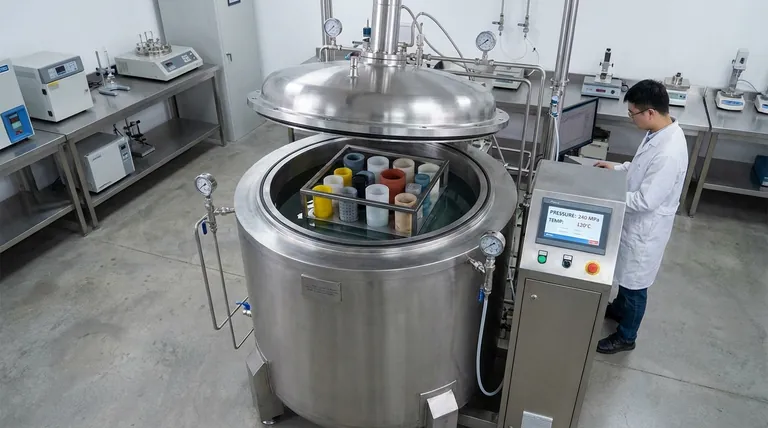
The Role of Pressure in Isostatic Pressing
Isostatic pressing is a manufacturing method that consolidates powders into solid objects. Its defining characteristic sets it apart from more conventional pressing techniques.
The Fundamental Principle
Unlike traditional uniaxial pressing, which applies force along a single axis, isostatic pressing uses a fluid to transmit pressure equally from all directions. This creates a state of uniform compression on the powder part.
This uniform application of force is the key to producing components with exceptionally consistent density and microstructure, free from the internal stresses and weak points common in other methods.
Why "Warm" Pressing Changes the Equation
The "warm" in WIP is not an incidental detail; it is central to the process's efficiency and effectiveness. The synergy between heat and pressure allows it to achieve results that are distinct from cold or hot isostatic pressing.
The Synergy of Heat and Pressure
A Warm Isostatic Press operates at temperatures significantly above ambient, typically between 80°C and 120°C, though some applications can require up to 450°C.
This targeted heating is designed to soften the powder material or, more commonly, the binder mixed in with the powder.
How Temperature Reduces Pressure Requirements
By softening the material, the press requires substantially less mechanical force to rearrange the powder particles and eliminate the voids between them. The material becomes more pliable and flows more easily under compression.
This is why a pressure range of up to 240 MPa is sufficient for most WIP applications. The thermal energy does a significant portion of the work that would otherwise require immense pressure.
Understanding the Trade-offs: WIP vs. CIP
The pressure used in WIP is best understood when compared to its counterpart, Cold Isostatic Pressing (CIP). The differences in operating parameters highlight their distinct applications.
A Clear Pressure Distinction
Warm Isostatic Pressing (WIP) typically uses pressures up to 240 MPa.
In stark contrast, Cold Isostatic Pressing (CIP) operates at much higher pressures, commonly ranging from 400 MPa to over 1,000 MPa.
The Rationale for High-Pressure CIP
CIP is used for materials like ceramics and metal powders at room temperature. These materials are rigid and require extreme pressure to force the particles together and achieve a high-density "green" part (an unsintered component) strong enough for handling.
When to Choose Lower-Pressure WIP
WIP is the preferred method for materials, especially polymers or powders mixed with polymeric binders, that benefit from thermal softening. The heat makes densification easier, allowing for lower pressures, which can reduce tooling costs and energy consumption.
Making the Right Choice for Your Goal
Selecting the correct isostatic process depends entirely on the material you are working with and your desired outcome.
- If your primary focus is compacting polymers or powders with binders: WIP is the more efficient choice, as the heat reduces the required pressure, tooling complexity, and energy costs.
- If your primary focus is creating a dense "green" part from hard ceramics or metals: CIP is necessary, as its extremely high pressures are required to compact rigid powders at ambient temperature.
Ultimately, understanding the interplay between temperature and pressure is the key to selecting the most effective consolidation process for your material.
Summary Table:
| Aspect | Details |
|---|---|
| Pressure Range | 0 to 240 MPa |
| Temperature Range | 80°C to 450°C |
| Key Advantage | Uniform compression for consistent density and microstructure |
| Ideal Materials | Polymers, powders with binders |
| Comparison to CIP | Lower pressure than CIP (400-1000+ MPa), more efficient for soft materials |
Optimize your laboratory processes with KINTEK's advanced lab press machines! Whether you need an automatic lab press, isostatic press, or heated lab press, our solutions deliver precise pressure and temperature control for uniform powder compaction, reducing energy costs and enhancing material quality. Don't let inefficiencies hold you back—contact us today to discuss how we can support your specific laboratory needs and achieve superior results!
Visual Guide
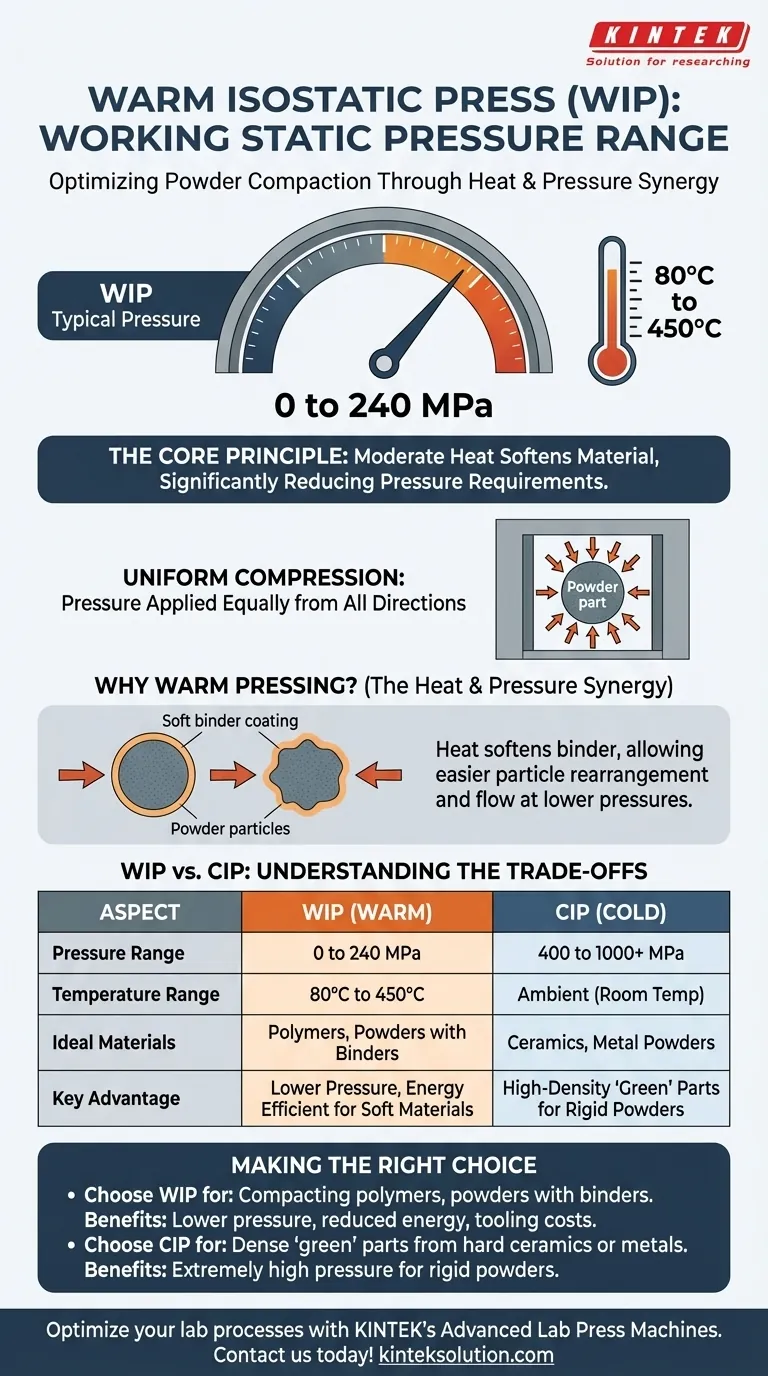
Related Products
- Lab Isostatic Pressing Molds for Isostatic Molding
- Automatic High Temperature Heated Hydraulic Press Machine with Heated Plates for Lab
- Lab Polygon Press Mold
- Automatic Heated Hydraulic Press Machine with Hot Plates for Laboratory
- Lab Round Bidirectional Press Mold
People Also Ask
- What is the Electric Lab Cold Isostatic Press (CIP) and its primary function? Achieve Uniform High-Density Parts
- How does cold isostatic pressing optimize material properties? Boost Strength and Uniformity in Your Materials
- What are the design advantages of cold isostatic pressing? Unlock Complex Shapes and Uniform Density
- What are some research applications of electric lab CIPs? Unlock Uniform Powder Densification for Advanced Materials
- What are the benefits of uniform compaction pressure in isostatic pressing? Achieve High-Density, Isotropic Parts
